Breast is Best
The World Health Organization (WHO) recommends that infants are exclusively breastfed during the first six months of life.
There is no substitute for breast milk. It is simply the best food for your baby.
Breast milk provides all the nourishment your baby requires and builds immunities, protecting your baby against infections.
Babies who are exclusively breastfed will get the best start for their growth, development and health.
Infants who are not breastfed will need a suitable breast-milk substitute, for example, infant formula. If you decide to bottle-feed your baby, please discuss with your health care professional on the type of infant formula suitable for your baby.
What do you need to get started on bottle feeding?
There are many different types of feeding equipment available. There is no evidence that one type of baby bottle or teat is better than any other, just go with what feels right for you and your baby.
You will need :
- feeding bottles
- teats
- sterilising equipments
- bottle and teat brush
- formula milk, if you’re formula feeding , or expressed breast milk.
Choosing a baby bottle
Basically, feeding bottles are made from either glass or plastic. Both have their pros and cons.
Glass bottles
A glass bottle retains the nutrients in milk and they do not contain any chemical that could potentially get into the baby’s formula. On the other hand, they are heavy and cumbersome.
Plastic bottles
Plastic bottles are unbreakable but they do deteriorate, so you will need to replace them regularly.
Are plastic bottles safe?
Plastic baby bottles are made from one of two different compounds :
- polyethylene (also known as EVA plastics), and
- polycarbonate.
Recent tests indicate that a chemical called bisphenol-A (BPA) may leach out from polycarbonate plastic into baby formula when a bottle containing formula milk is heated for 20 to 30 minutes at 100 degrees centigrade (212 degrees Fahrenheit).
If you want to avoid any bottles that contains BPA, look for the #7 recycling symbol :
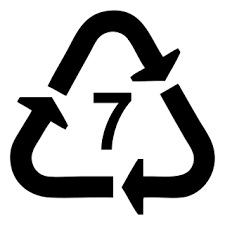
or “PC” on the bottom :
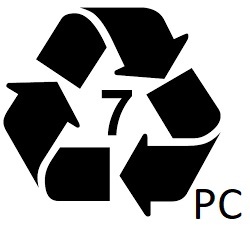
However, not all plastics labeled with #7 recycling code contain BPA :
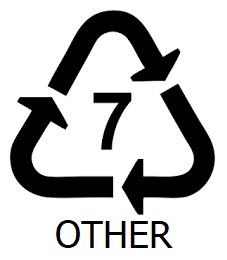
Some bottle brands explicitly say that their products are not made of Bisphenol A.
Choosing the right teat
Teats come in various flow sizes and in different types of material, either;
- silicone, or
- latex.
Silicone teats are a little less flexible than latex teats but they are more durable. ‘Orthodontic’ teats are no better than regular-shaped teats and there is some evidence to suggest they may not be good for tooth development.
Safety issues to consider when choosing a teat includes :
- Ensure the teat is right for your baby’s age.
- Most teats are labelled according to age. The flow will then be suitable for your baby.
- For example, feeding a newborn using a teat designed for an older baby will cause overflow of milk and may lead to choking.
- Test the flow by holding the bottle upside down – milk should drip out at a constant, steady rate.
- If milk drips too slowly, the baby will get tired before the feed is finished.
- If milk pours out in a stream, the baby may dribble and splutter during feeding.
All teats deteriorate with use, so check regularly for damage, especially once your baby’s teeth starts coming through. A damaged teat is a potential choking hazard.
If you boil your baby’s bottles and teats, it may make the teats sticky and unusable earlier compared to other methods of sterilisation.
Cleaning
Make sure you clean and sterilise ALL feeding equipment to prevent your baby from getting infections and stomach upsets.
Before sterilising, always clean and rinse all feeding bottles and teats.
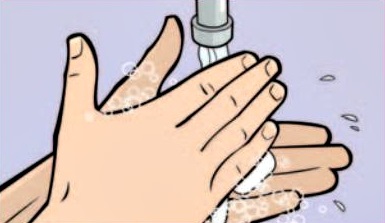 |
Wash your hands with soap and water and dry using a clean cloth. |
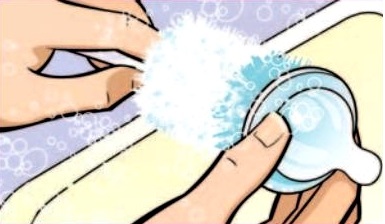 |
Wash all feeding and preparation equipment thoroughly in hot soapy water. Use a clean bottle and teat brush to scrub the inside and outside of bottles and teats to make sure that all remaining milk is removed from the hard-to-reach places. |
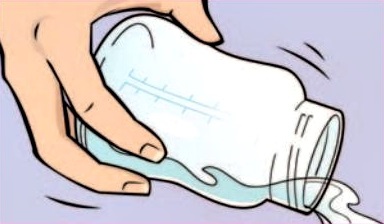 |
Rinse all your equipment in clean, cold running water before sterilising. |
How to sterilise feeding equipment?
Sterilise all equipment used to feed your baby.
Whether you are using expressed breast milk or infant formula, clean and sterilise bottles, teats and any other feeding equipment before each feed.
Remember to first wash your hands well with soap and water and clean the work surfaces with hot soapy water.
There are several ways in which you can sterilise your baby’s feeding equipment, such as :
- using a cold-water sterilising solution;
- steam sterilising; and
- sterilising by boiling.
- Cold-water sterilisingsolution
- Follow the manufacturer’s instructions.
- Change the sterilising solution every 24 hours.
- Leave feeding equipment in the sterilising solution for at least 30 minutes.
- Make sure that there is no air trapped in the bottles or teats when placing them in the sterilising solution.
- Keep all the equipment under the solution with a floating cover.
- Steam sterilising (electric steriliser or microwave)
- As there are different types of steriliser it is important to follow the manufacturer’s instructions.
- Make sure the openings of the bottles and teats are faced upside down in the steriliser.
- Manufacturers will give a guide as to how long you can leave equipment that you are not using straight after sterilising before it needs to be resterilised.
- Sterilising by boiling
- Take extra care to ensure safety and prevent scalds or burns. Never leave hot pans and liquids unattended, especially if children are present.
- Make sure that the feeding bottles and teats are safe to boil. Remember that teats tend to get damaged faster when boiled.
- Wash hands thoroughly. Clean and disinfect the surface where you will put together the bottle and teat.
- Boil the feeding equipment in water for at least 10 minutes, making sure that all items stay under the surface of the water.
- It is best to remove the bottles just before they are used.
- If you are not using the bottles immediately, put them together with the teat and lid in place to prevent the inside of the sterilised bottle and the inside and outside of the teat from being contaminated.
How to prepare a bottle feed
Even when tins and packets of powdered infant formula are sealed, they can sometimes contain harmful bacteria that could make your baby ill. Although these bacteria are rare, the infections they cause can be life-threatening.
What type of water to use?
- Tap water that has been freshly boiled (and cooled slightly to 70°C or above) is the best water to make up a feed.
- Do not use water that has been previously boiled or artificially softened water.
- This is because the balance of minerals in previously boiled water and artificially softened water may not be suitable for making up formula feeds.
- Bottled water is not recommended to make up a feed as it is not sterile and may contain too much salt (sodium) or sulphate.
- ‘Natural mineral water’ may contain too much salt (sodium) or sulphate.
- If you have to use natural mineral water to make up a feed, check the label to make sure;
- the sodium (also written as Na) level is less than 200 milligrams (mg) per litre, and
- the sulphate (also written as SO4) content is not higher than 250 milligrams (mg) per litre.
- Like tap water, bottled water is not usually sterile, so if you have to use it you will still need to boil it before you prepare the feed.
- If you have to use natural mineral water to make up a feed, check the label to make sure;
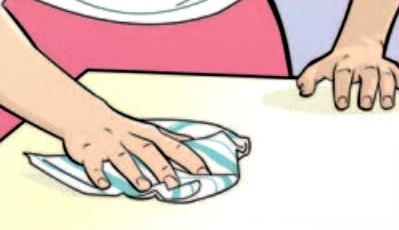 |
Clean and disinfect a surface on which to prepare the feed. |
 |
Wash your hands with soap and water, and dry with a clean or disposable cloth. |
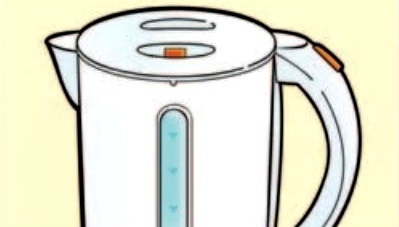 |
Boil some fresh tap water. If using an automatic kettle, wait until the kettle switches off. If using a pan to boil water, make sure the water comes to a rolling boil. Then leave the water to cool in the kettle for no more than 30 minutes so that it remains at a temperature of at least 70°C. |
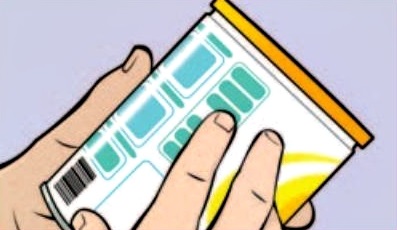 |
Read the instructions on the formula’s packaging to find out how much water and how much powder you need. Adding more or less formula than instructed could make infants ill. |
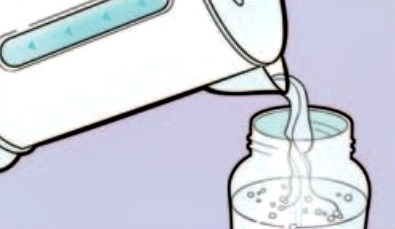 |
Take extra care to avoid scalds, pour the correct amount of boiled water into a cleaned and sterilized feeding bottle. |
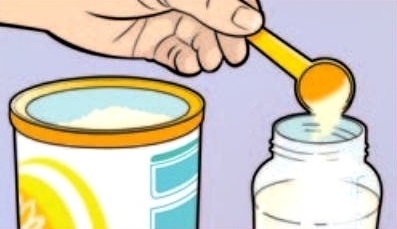 |
Add the exact amount of formula to the water in the bottle. |
Safe Bottle-Feeding
- Test the temperature of the infant formula on the inside of your wrist before giving it to your baby.
- It should be body temperature, which means it should feel warm or cool, but not hot.
- Make sure that you are sitting comfortably.
- Always hold your baby close to you and look into their eyes when feeding. This helps the baby feel safe and loved.
- To reduce the amount of air your baby swallows while drinking, hold your baby in a semi-upright position (about a 45-degree angle) on your lap.
- Tilt the bottle so that the nipple is always filled with fluid. This will also reduce air bubbles.
- Brush the teat against your baby’s lips and, when your baby opens their mouth wide, allow them to draw in the teat.
- If the teat becomes flattened while you are feeding, pull gently on the corner of your baby’s mouth to release the vacuum.
- Your baby may need short breaks during the feed and may need to burp sometimes.
- When your baby does not want any more feed, hold him upright and gently rub or pat his back to bring up any wind. This may be a very small amount, as wind is not as big a problem as many people think.
- Your baby knows when he has had enough.
- Do not force him to finish the bottle.
- Stop if he falls into a deep sleep near the end of the feeding, but has not finished the milk.
Safety tips to avoid choking
- Avoid bottle-propping.
- Bottle-propping is when you balance a bottle on a baby’s chest with a towel, small pillow, or special device so that you do not have to feed him directly.
- Babies left alone with a bottle in their mouths could choke on the liquid.
- Do not put your baby to bed with a bottle.
- This can be tempting for older children, who can hold their own bottles, but it can damage their teeth.
- Milk sugars called lactose (which are found naturally in all milks) can cause very serious tooth decay.
- This can start soon after the first teeth appear.
- Do not use the feeding bottle to feed your baby other foods besides liquids.
- Take the bottle away as soon as your baby has had enough.
- Cuddle your baby close to your body, facing you, and hold the bottle while your baby feeds.
Conclusion
Feeding time should be safe and enjoyable for everyone.
Reference
- How to prepare formula for bottle-feeding at home, WHO, 2007.
- A guide to bottle feeding, NHS, Department of Health UK, 2012.
| Last Reviewed | : | 28 February 2018 |
| Writer | : | Fatimah binti Salim |
| Accreditor | : | Dr. Aisha Fadhilah binti Abang Abdullah |







